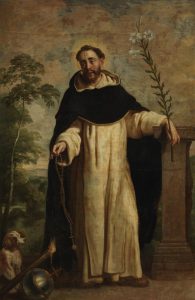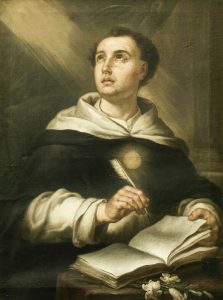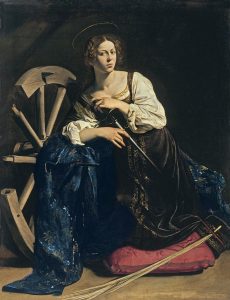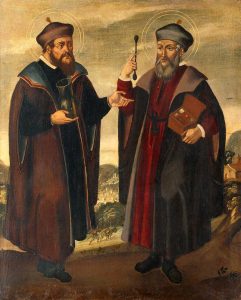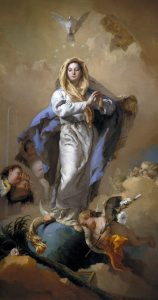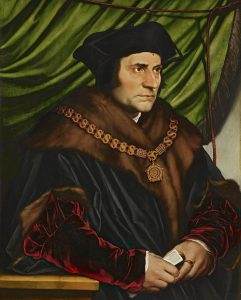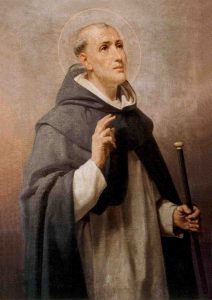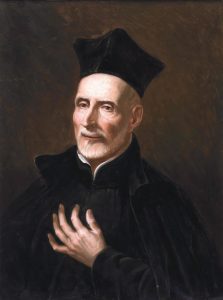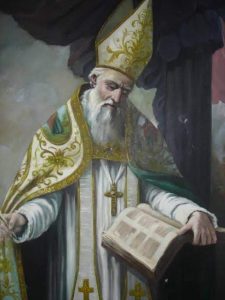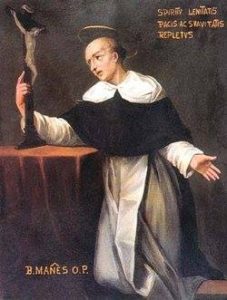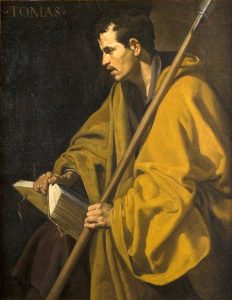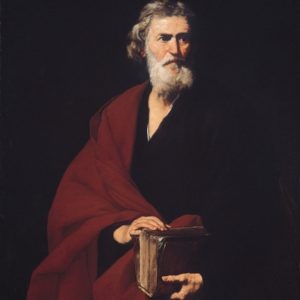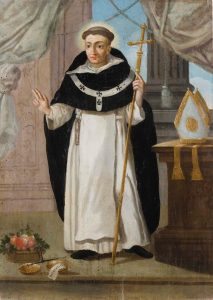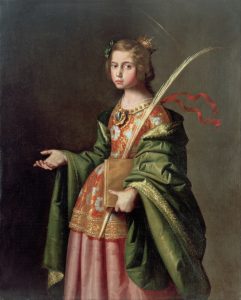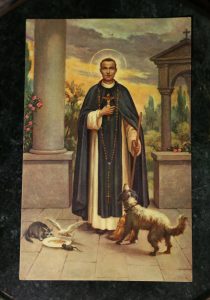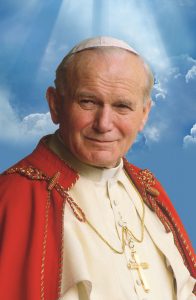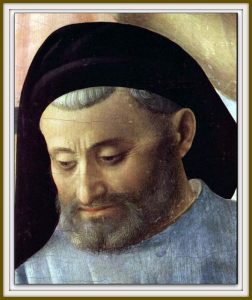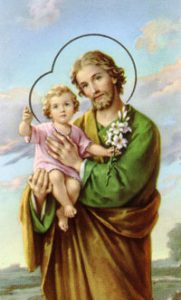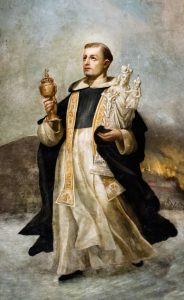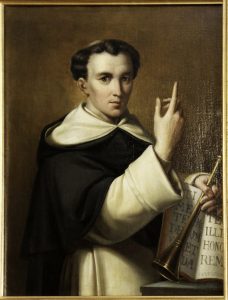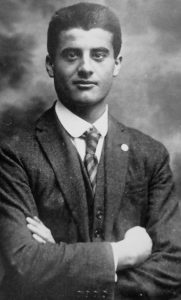(1579-1639), religious
Patron of the UST College of Rehabilitation Sciences
Feast Day: November 3
Born in Lima, Peru in 1579, Martin was the illegitimate son of Juan de Porres, a Spanish nobleman and Anna, a freed Panamanian slave. At first, the father abandoned his family, and they lived in dire poverty. Later, the father’s conscience smote him, and provided basic education to his children. At age 15, Martin presented himself to the Dominican Priory in Lima, and was received as a ‘donado’ (tertiary servant). In this capacity, he gave himself to the lowliest duties in the house. After several years, seeing his evident goodwill and sanctity, his superiors invited him to make a solemn profession as a cooperator brother. He served in various offices in the convent: porter, barber, infirmarian and wardrobe keeper. As infirmarian, he gained the reputation for the ability to perform miraculous cures.
Martin tirelessly work for the poor, establishing an orphanage and a foundling hospital. He served as an almoner, who was in charge of the convent’s food distribution to the poor, and he ministered to African slaves brought to Peru. He was a friend and collaborator with his fellow saints, John Macias and Rose of Lima. Among the many miracles attributed to him were levitation, bilocation (being in two places at one time), miraculous knowledge, instantaneous cures, the ability to communicate with animals and pass through locked doors. Ministering to the sick, he is said to have often effected their healing with only a simple glass of water. One day, he took an aged beggar, covered with ulcers, to his own bed. A brother reproved him but Martin replied: “Compassion, my dear brother, is preferable to cleanliness. Reflect that with a little soap I can easily clean my bed covers, but even with a torrent of tears I would never wash from my soul the stain that my harshness toward the unfortunate would create.” He was beatified in 1837 by Pope Gregory XVI, and was canonized in 1962 by Pope John XXIII.
Renowned for his compassion, St. Martin de Porres provided therapy, both physical and spiritual, for the poor and needy. Under his patronage the UST College of Rehabilitation Sciences endeavors to show continuing competence in their field of practice; commitment in the service of the church, the nation, and the global community; and compassion towards others.
Source:
- Galduf, Vicente and Joaquin, Nick (trans.), Martin de Porres: A Colored Saint, 2018.





